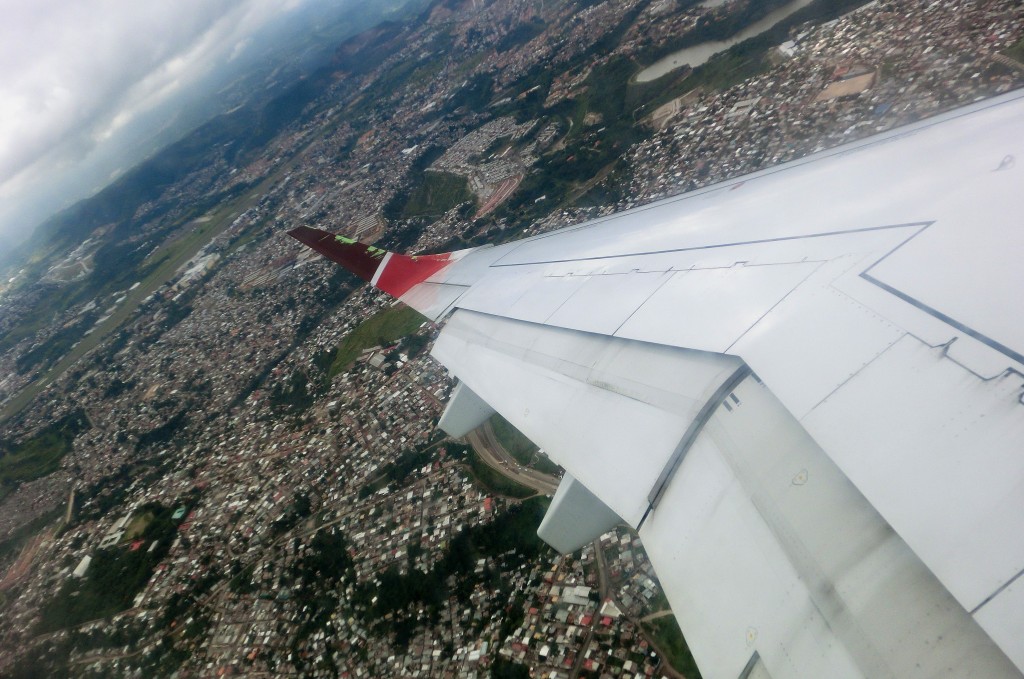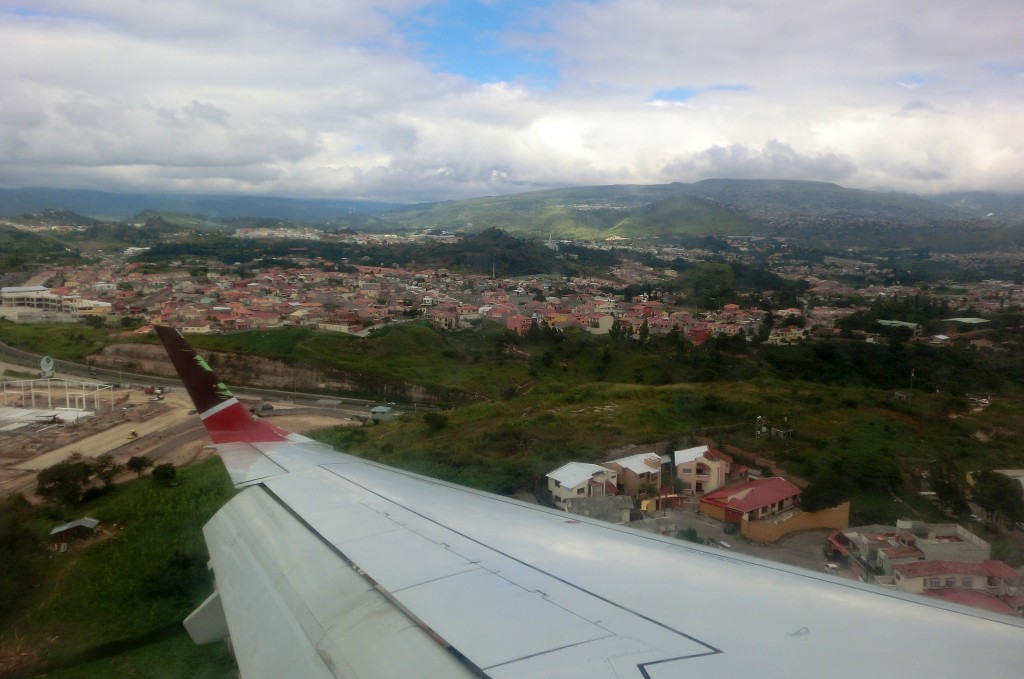I’ve now flown into Tegucigalpa’s main airport, Toncontín, twice — once in a Embraer 190 and again in a small puddle-jumper from Roatán, part of the Bay Islands that lie just off Honduras’s North Coast.![]()
Frankly, I was expecting a much more eventful landing from everything I’d been led to believe.
Even with an expanded runway as of May 2009, Toncontín has quite a bit of notoriety — its difficult approach and relatively short runway makes it one of the world’s trickiest airports. Opened in 1934, Toncontín featured just a 6,112-foot runway and, as expanded, it features a single runway extended to over 7,000 feet. That’s not incredibly short, necessarily — it compares to the runways at New York’s LaGuardia Airport and Washington’s Reagan National Airport.
The problem is that Teguicgalpa is a valley that lies within essentially a 360-degree ring of mountains. So as you approach Toncontín, you approach a ridge of mountains that swiftly gives way to the valley, with sprawl following soon thereafter. The approach takes a broad right turn that follows a counterclockwise swirl around the valley, followed by a sharp left, counterclockwise turn as you descend. It’s a little jarring, but no more so than landing, say, essentially along the water — just like at LGA or DCA — where you descend slowly into the water until at the last moment you hit the runway.
But it’s caused problems in the past — in May 2008, TACA Flight 390 overran the runway and crashed into a street. The accident killed just five people, but it highlighted the dangers of Toncontín, which is routinely called one of the world’s most dangerous airports. The TACA incident is one of a dozen of such accidents since the 1960s.
I mention Toncontín because it’s a huge infrastructure issue — historically, getting into and out of the Honduran capital has been more difficult than, say, flying into Managua or Panamá City. That’s not in itself a reason for financial centers to develop there and not in Tegucigalpa, but it doesn’t help.
In fact, it’s an issue of unfinished business from the former administration of Manuel Zelaya, whose push to extend Toncontín’s runway was completed in May 2009, just a month before the coup that ousted him from office (for reasons other than his infrastructure goals). But when he was pushed from power, Zelaya hoped to open a new airport at Soto Cano Air Force Base, which US military personnel have been using for decades, most infamously in the 1980s when the United States backed Contra forces based in Honduras against the Soviet-backed Nicaraguan Sandinistas — it’s also known as Palmerola, and it’s closer to Honduras’s old capital before 1880, Comayagua, and to Honduras’s second city San Pedro Sula.
But since Zelaya’s ouster, the airport move has been a less pressing issue. Though Honduras’s outgoing right-wing president Porfirio Lobo Sosa has confirmed the long-term goal of moving the capital’s major international airport from Toncontín to Palmerola, it’s still nowhere near fruition.

